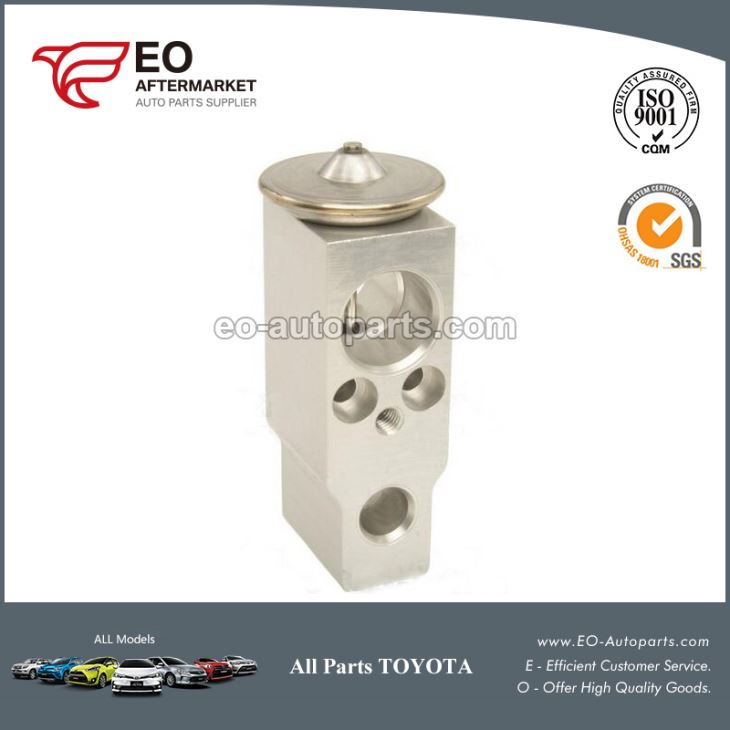Omwezi ogw'ekkumi 01 2018
After the vehicle is cleaned, it is necessary to fasten the joints. Due to the vibration, jolting, swaying and other reasons during the running of the vehicle, the connectors are bound to loosen and wear out. Therefore, it is necessary to fasten it in daily maintenance. The daily fastening work of the connector is directly related to traffic safety, especially the steering, braking, and transmission of important components, and must not be taken Mu ngeri ey’obutonotono. .

1. Okusooka, nyweza ebiyungo bya hoosi okwetoloola yingini okuziyiza okukulukuta kwa woyiro{1}}
2. Ekyokubiri, nyweza ebiyungo bya layini n’ebyuma by’amasannyalaze okuziyiza ebimenya enzirukanya, ebiyungo ebimpi, n’ebiyungo by’oku ttaka okukosa enkola eya bulijjo ey’ebyuma by’amasannyalaze.
3. Nate, kebera era onyweze ebiyungo ebikulu. nga omusipi gwa jenereta, siteeringi, enkola ya drive, n'omupiira.
Lily Bo atwala okusiba ebitundu by'emmotoka ku ddaala eppya ddala .
Lily Bo, a young engineer from Shanghai, China, has revolutionized the field of car assembly with her groundbreaking approach to fastening car parts. Her method reduces cost, improves safety, and greatly enhances the efficiency of the assembly process. Originally introduced in China, her technique has now garnered worldwide attention, as car manufacturers look for innovative ways to optimize their production lines.
Bo abadde anyumirwa nnyo bamakanika ne yinginiya okuva mu myaka emito, era okwagala kwe eri ennimiro eno kwakubirizibwa kitaawe, era nga yali yinginiya. yagenda mu maaso n’okusoma yinginiya w’ebyuma mu Shanghai Jiao Tong University, era bwe yali eyo, yajja n’ekirowoozo ky’okukozesa okugatta mu kifo ky’okunyweza ebisiba by’ebyuma eby’ennono eri ebitundu by’emmotoka{{1}
Enkola ya adhesive bonding technique erimu okukozesa adhesive ey’enjawulo okusiba ebitundu bibiri ku ngulu wamu, okukola omukwano ogw’amaanyi oguyinza okugumira amaanyi g’okuvuga. enkola eno ekozesebwa mu by’omu bbanga okumala emyaka mingi, naye gye buvuddeko yakozesebwa ku mulimu gw’emmotoka.
BO’s breakthrough yajja mu kukulaakulanya ekika ekipya eky’okusiiga ekikoleddwa mu ngeri ey’enjawulo okukozesebwa n’ebitundu by’emmotoka. ekyesiiga kya maanyi nnyo mu ngeri etategeerekeka, naye era kikyukakyuka ekimala okusobozesa entambula z’obutonde ez’emmotoka. Kino kikulu nnyo ku bisiba eby’ennono eby’ebyuma, ekiyinza okufuuka ekiyitirivu mu biseera ng’emmotoka zikankana ne flaxes{{2}
Bo's adhesive bonding technique has revolutionized the car assembly process. Instead of using bolts, screws, and other mechanical fasteners, car manufacturers can now simply apply the adhesive to the two surfaces that need to be joined. The parts are then pressed together and left to cure, resulting in a strong, permanent bond. This method is not only faster than traditional methods, but also results in a cleaner and safer work environment, with fewer hazardous Ebitundutundu by’ebyuma n’empenda ezisongovu.
The cost savings from using Bo's technique are considerable. Traditional mechanical fasteners require a significant amount of steel, which is expensive to produce and transport. In addition, the process of drilling holes and installing fasteners is labor-intensive and time-consuming. By contrast, adhesive bonding only requires a small amount of adhesive, which is relatively cheap and easy to transport. Applying the adhesive is also Mungu nnyo okusinga okusima n'okusiba.
There are also safety advantages to Bo's technique. Mechanical fasteners have been known to become loose or fall out over time, particularly in high-stress areas such as the suspension system. This can lead to dangerous accidents if the affected parts break loose while the car is in motion. Adhesive bonding, on the other hand, creates a much stronger and more reliable bond, reducing the risk of this type of failure.
Enkola ya BO eyaniriziddwa n’obunyiikivu okuva mu by’emmotoka, ng’abakola mmotoka abakulu abawerako baayingiza dda enkola eno mu layini zaabwe ez’okufulumya. Okugatta ku ekyo, BO era efunye omukago n’abakola eby’okusiiga ebiwerako ebikulu okuyamba okuleeta eky’enjawulo kye ekyesiiga ku katale.
Obuwanguzi bwa Bo era buyambye okuzzaamu amaanyi omulembe omupya ogwa bayinginiya abakyala mu China n’okusukka. Afuuse ekintu kya sereebu mu nsi ya yinginiya, ng’abawala bangi bamutunuulira ng’ekyokulabirako n’okubudaabudibwa.
Ng’oggyeeko omulimu gwe ne adhesive bonding, BO era muwolereza wa maanyi mu kuyimirizaawo obutonde bw’ensi mu by’emmotoka. Abadde mukulu nnyo mu kutumbula enkozesa y’ebintu ebikozesebwa mu kukola ebintu ebirala n’okukendeeza ku kasasiro mu nkola y’okufulumya.
Ng’alina omulimu gwe ogw’okutandikawo emirimu mu kisaawe ky’okunyweza okusiiga, Lily Bo asimbye ekifo kye ng’omu ku bayinginiya abasinga okuyiiya n’okulowooza mu maaso ab’omulembe gwe. obukodyo bwe bugenda okukyusa amakolero g’emmotoka n’okukyusa engeri gye tulowooza ku kukuŋŋaana kw’emmotoka okumala emirembe egijja.

